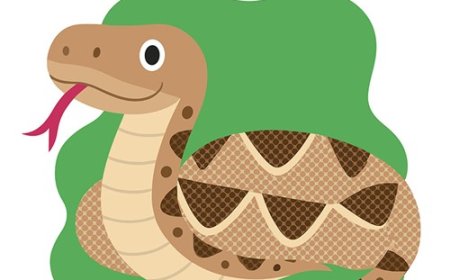Striped Bark Scorpion for Kids: A Common Creeper with a Bold Look
Learn about the striped bark scorpion—one of the most common scorpions in the United States. Explore where it lives, how it looks, and what to do if you see one.
🦂 Introduction
The striped bark scorpion (Centruroides vittatus) is one of the most common scorpions in the United States, especially in the central and southern regions. With its light yellow body and two dark stripes, this scorpion is easy to recognize and often found close to people—in woodpiles, sheds, and even inside homes.
While its sting is painful, it is not considered medically dangerous for most people. This scorpion is a regular part of many ecosystems and helps by controlling insect populations. Knowing how to identify it can help you stay safe and better understand this interesting arachnid.
🔍 What Does a Striped Bark Scorpion Look Like?
The striped bark scorpion is medium-sized, growing up to about 7 centimeters (2.75 inches) in length. Its body is light tan or yellow, with two dark brown stripes running down its back—which is where it gets its name.
It has long, thin legs and pincers, and a narrow tail that ends in a curved stinger. Like other scorpions, its body glows under UV (black) light, which helps people spot it at night. This glowing ability comes from a natural substance in its exoskeleton.
🌍 Where Do Striped Bark Scorpions Live?
This species is most commonly found in the central United States, especially in states like:
Texas
Oklahoma
Arkansas
Missouri
Kansas
They live in a wide range of habitats, including grasslands, forests, rocky hills, and urban areas. Because they are so adaptable, they are often found near homes, hiding in:
Woodpiles
Sheds
Under stones
Inside boots, gloves, or closets
They are climbers and may be found in attics or high walls inside buildings. They’re especially active during warm months and at night.
🍽️ What Do They Eat?
Striped bark scorpions are nocturnal predators. They use the tiny hairs on their body to feel vibrations from nearby prey. Once detected, they grab it with their pincers and use their stinger to inject venom if needed.
They feed on:
Crickets
Beetles
Spiders
Moths
Small insects
These scorpions play a valuable role in natural pest control, helping to keep bug populations in check.
🛡️ Are Striped Bark Scorpions Dangerous?
The striped bark scorpion does have venom, but its sting is not usually dangerous to humans. The sting feels a lot like a bee or wasp sting—sharp pain, redness, and mild swelling. In some cases, people may feel numbness or tingling near the sting site.
Children, older adults, or allergic individuals may react more strongly and should be monitored. If there are serious symptoms like difficulty breathing, a doctor should be contacted right away.
To avoid stings:
Shake out shoes and clothing before wearing them
Don’t walk barefoot outside at night
Wear gloves when working with firewood or debris
🐣 Life Cycle and Behavior
Female striped bark scorpions give birth to live young, usually about 25 to 35 scorplings at a time. After birth, the babies climb onto their mother’s back and stay there for about 1–2 weeks until they molt and can live on their own.
Striped bark scorpions are usually solitary, though they may be found in groups during cold weather, hiding together in warm places like under bark or inside buildings.
They can live for 3 to 5 years, sometimes longer in captivity.
🌟 Fun Facts About the Striped Bark Scorpion
It’s one of the most commonly seen scorpions in the U.S.
Their two dark stripes make them easy to recognize.
They glow under blacklight, like most scorpions.
They can climb walls and trees, which many people don’t expect.
Even though they sting, they are not aggressive and try to avoid humans.
👧 Kid-Friendly Summary
The striped bark scorpion is a yellowish scorpion with dark stripes that lives in parts of the U.S., especially in Texas and Oklahoma. It comes out at night to eat bugs and usually hides during the day. It can sting, but it’s not very dangerous. If you find one, just give it space. These scorpions help control pests and glow under UV light, which makes them fun to learn about!
📚 Vocabulary Words
Striped bark scorpion – A common North American scorpion with two dark stripes on its back
Venom – Poison used to catch prey or defend against enemies
Pincer – A claw used for grabbing and holding
Scorpling – A baby scorpion
Exoskeleton – A hard outer body shell
Nocturnal – Active at night
Climber – An animal that can move up walls, trees, or rocks
Habitat – The natural home or environment of a plant or animal
❓ Interactive Quiz (8 Questions)
1. What makes the striped bark scorpion easy to recognize?
A. It has blue legs
B. It is bright red
C. It has two dark stripes ✅
D. It has spots
2. Where is the striped bark scorpion most common?
A. Alaska
B. Texas and nearby states ✅
C. Canada
D. California beaches
3. What does this scorpion eat?
A. Plants
B. Small insects ✅
C. Fish
D. Sand
4. What does its sting feel like?
A. Like nothing at all
B. Like a bee sting ✅
C. Like a tickle
D. Like an earthquake
5. What is a scorpling?
A. A kind of lizard
B. A scorpion's enemy
C. A baby scorpion ✅
D. A desert tree
6. How long do striped bark scorpions live?
A. A few months
B. 3–5 years ✅
C. 100 years
D. Only in winter
7. When do they usually hunt?
A. Morning
B. Afternoon
C. Night ✅
D. Rainy days
8. What do striped bark scorpions do when it gets cold?
A. Swim
B. Sleep in trees
C. Hide in groups for warmth ✅
D. Migrate























































